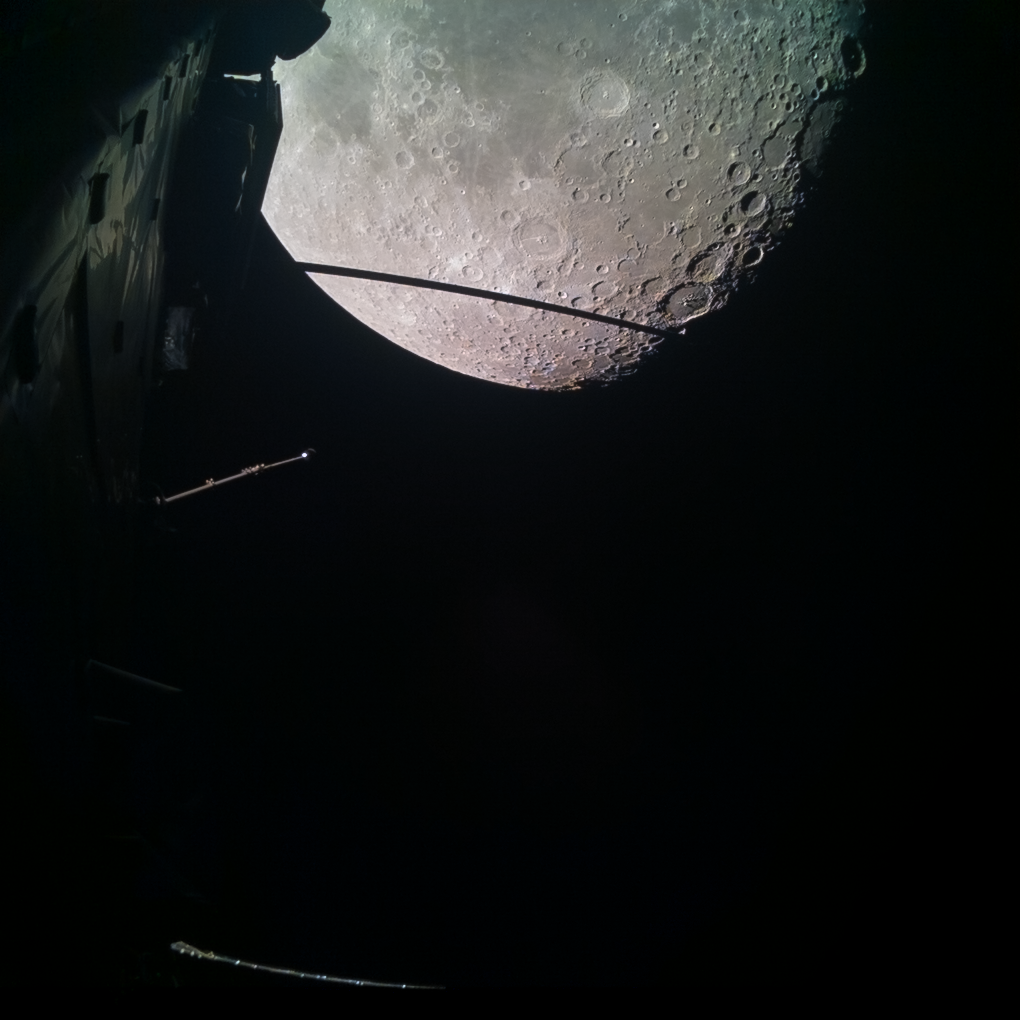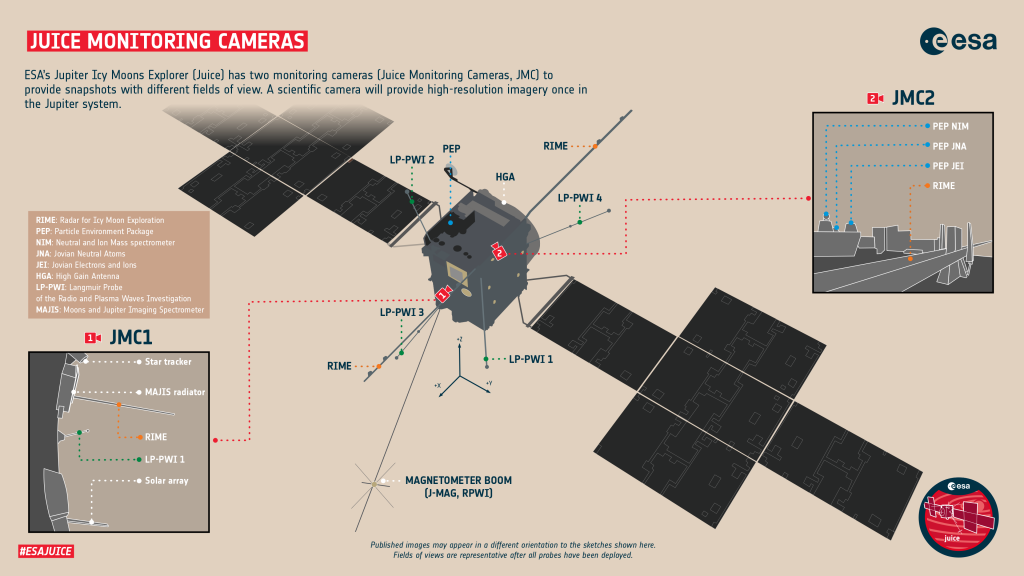During the first step of humankind’s first-ever lunar-Earth flyby, ESA’s Jupiter Icy Moons Explorer (Juice) mission captured stunning views of the Moon.
Juice took these images with its onboard monitoring cameras just before midnight CEST on 19 August, around its closest approach to the Moon.
This successful flyby of the Moon slightly redirected Juice’s path through space to put it on course for a flyby of Earth on 20 August 2024.
The image below was taken by Juice monitoring camera 1 (JMC1) at 23:25 CEST. The image shows some sign of real colour differences in the large-scale features on the lunar surface.

A second image, taken by JMC2, contains a casual ‘photobomber’ – the Earth shows itself as a dark circle outlined by a light crescent at the top centre of the image, peeking out from behind the spacecraft structure (look just above the fuzzy blue blob, which itself is a ghost image caused by reflection of sunlight).

The Juice monitoring cameras were designed to monitor the spacecraft’s various booms and antennas, especially during the challenging deployment period following launch.
The Juice monitoring cameras were not designed to make science observations or image the Moon. A scientific camera called JANUS is providing high-resolution imagery during the cruise phase flybys of Earth, Moon and Venus, and of Jupiter and its icy moons once in the Jupiter system in 2031.

JMC1 is located on the front* of the spacecraft and looks diagonally up into a field of view that sees deployed antennas, and depending on their orientation, part of one of the solar arrays.
JMC2 is located on the top** of the spacecraft. It was placed to monitor the multi-stage deployment of the 16 m-long Radar for Icy Moons Exploration (RIME) antenna. RIME is an ice-penetrating radar that will be used to remotely probe the subsurface structure of the large moons of Jupiter.
JMC images provide 1024 x 1024 pixel snapshots. The images shown here are lightly processed by Simeon Schmauß and Mark McCaughrean.
Guide to Juice’s monitoring cameras
More information on the lunar-Earth flyby
Rewatch the livestream of Juice’s first Moon images, including Q&A with the team
More images from Juice’s monitoring cameras in ESA’s Planetary Science Archive
Additional technical information:
*‘front’ means +X side of the spacecraft (the opposite side, -X hosts the high gain antenna). JMC1 looks towards the +Y/+Z direction.
**”top” means +Z side of the spacecraft and the centre of the field of view of JMC2 lies roughly in the XY plane. The -Z side of the spacecraft is attached to the launcher, which rotates around the Z axis during the ascent phase.

Discussion: 6 comments
I like the photos of the moon. Thanks for sharing with us?
Trajectory computation accuracy is just unbelievable ! Bravo to all those involved. Wish to have a tool to play with it (varying parameters) based eg on “where is JUICE”. Would be so nice.
Are you sure that the object peeking behind the hardware is the Earth? It’s not circular but elliptical and not a crescent but a ring all around (looking at several raw images) unless obstructed. I don’t see it in the test image from early July, so there is something new here for sure – but could it be some other hardware not illuminated then but now? A *simulated* view of Earth with the exact lighting from JUICE’s point of view would be ‘illuminating’.
Eppur si muove!
were can I find TLE data for tracking JUICE in Stellarium?
Does this help you? https://www.cosmos.esa.int/web/spice/spice-for-juice